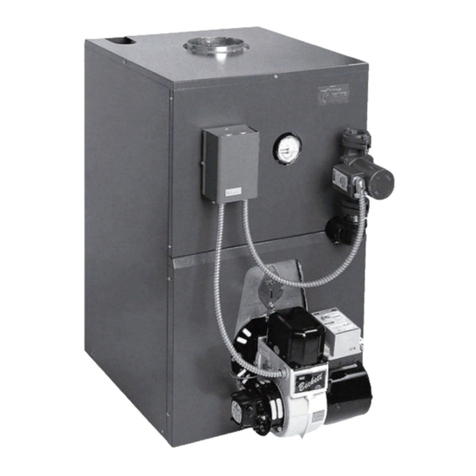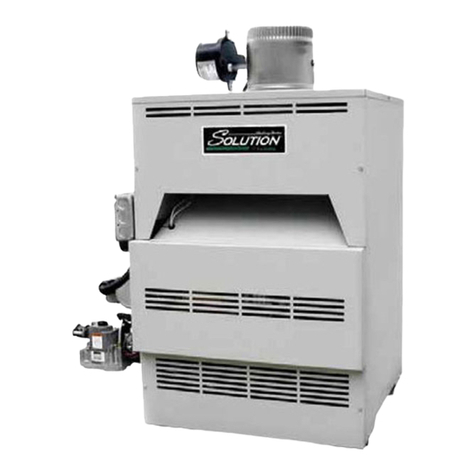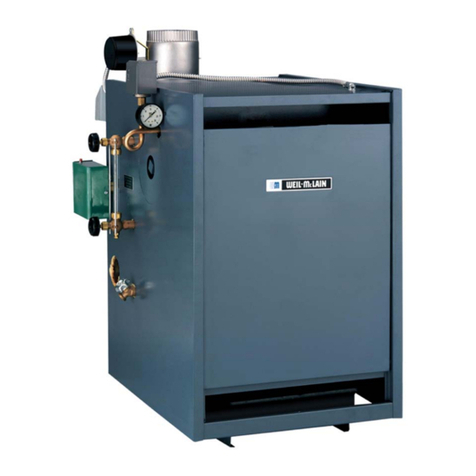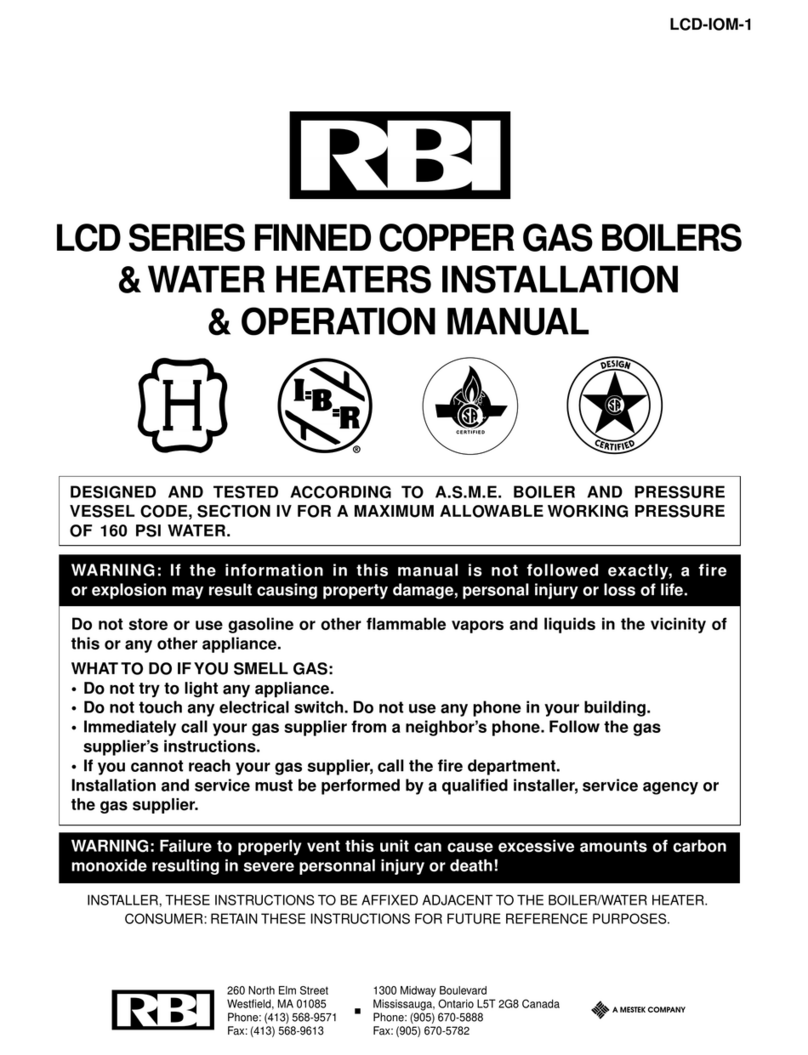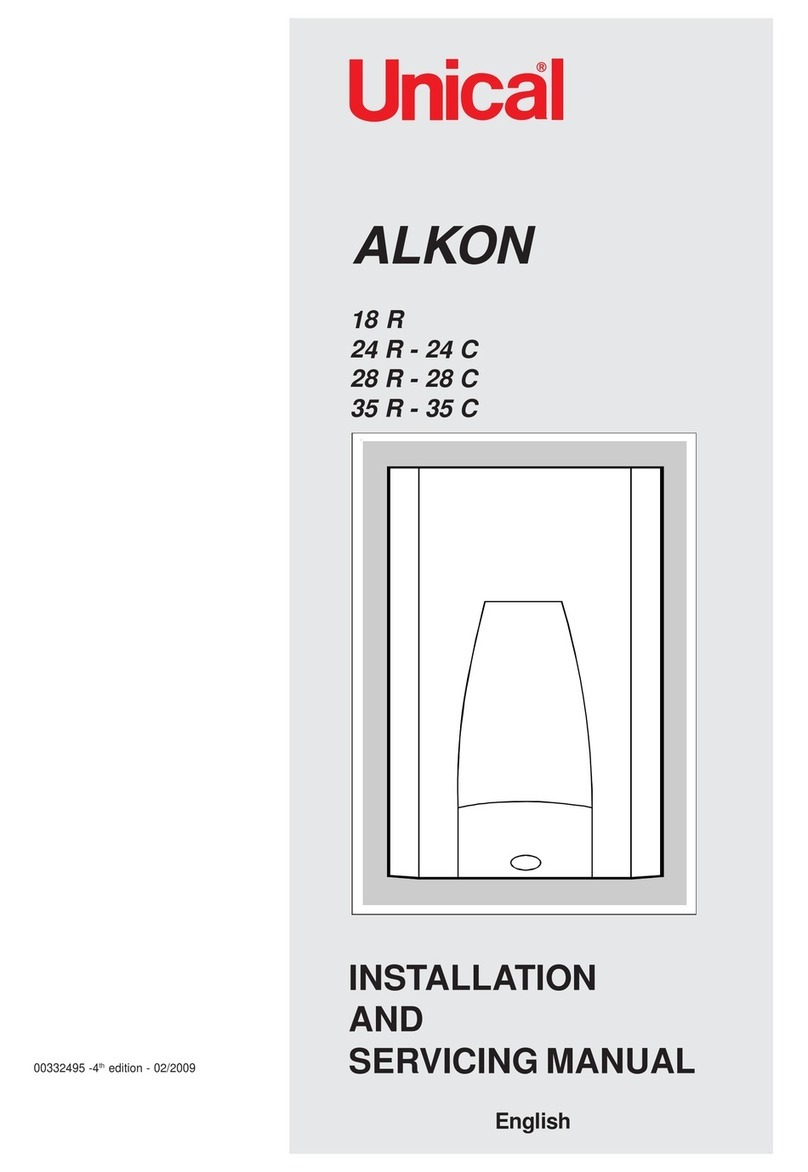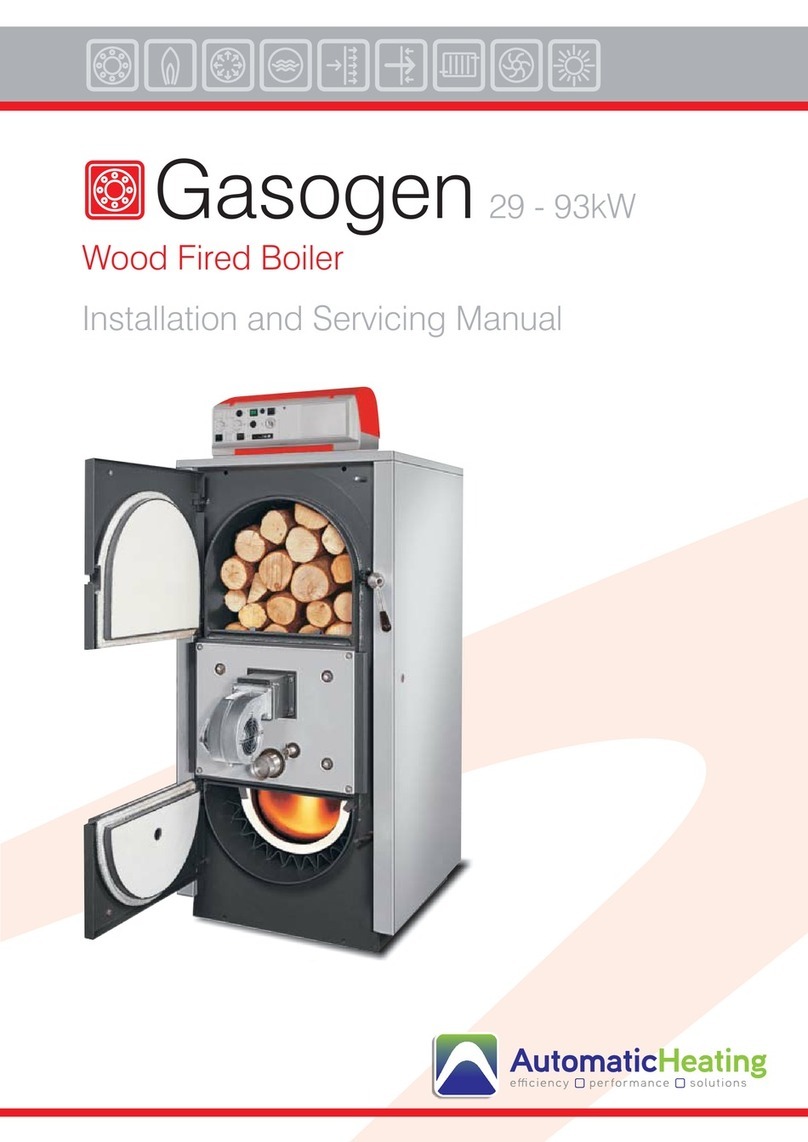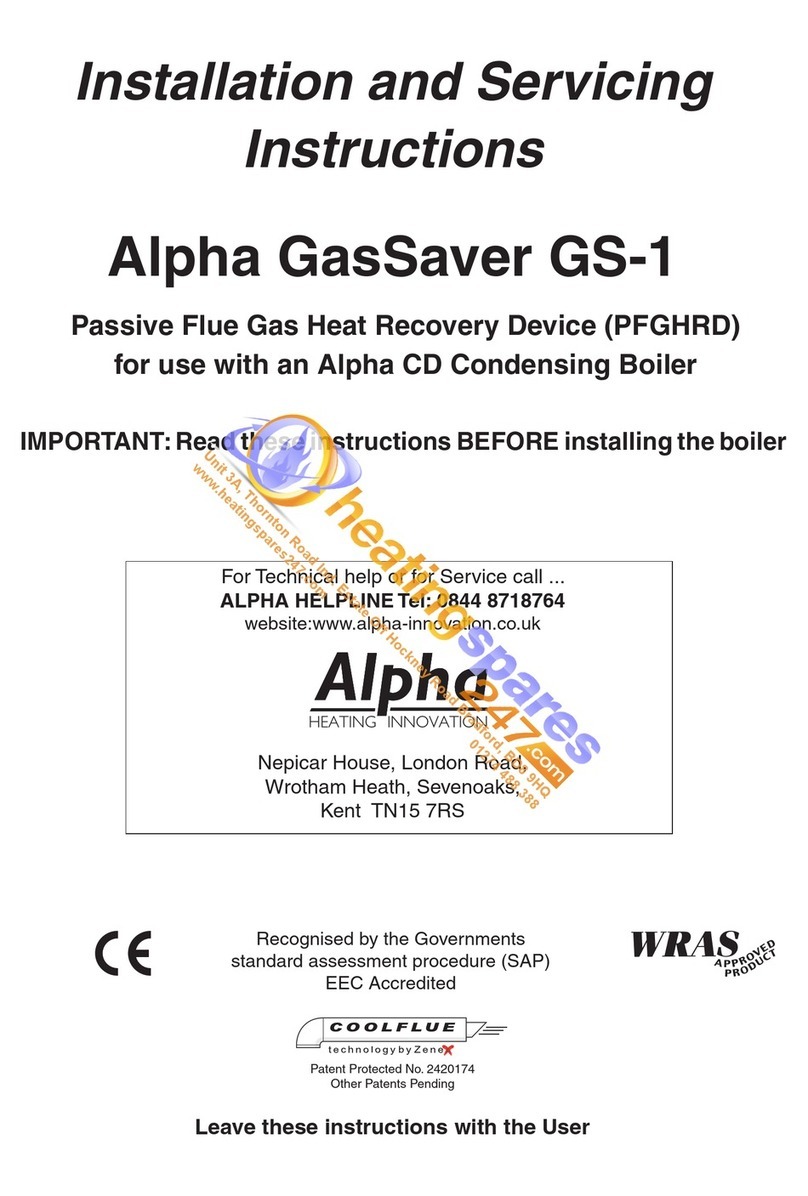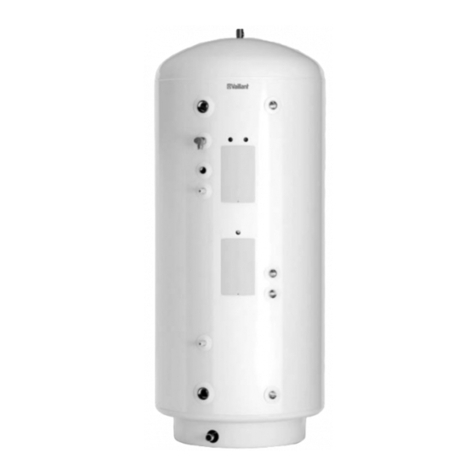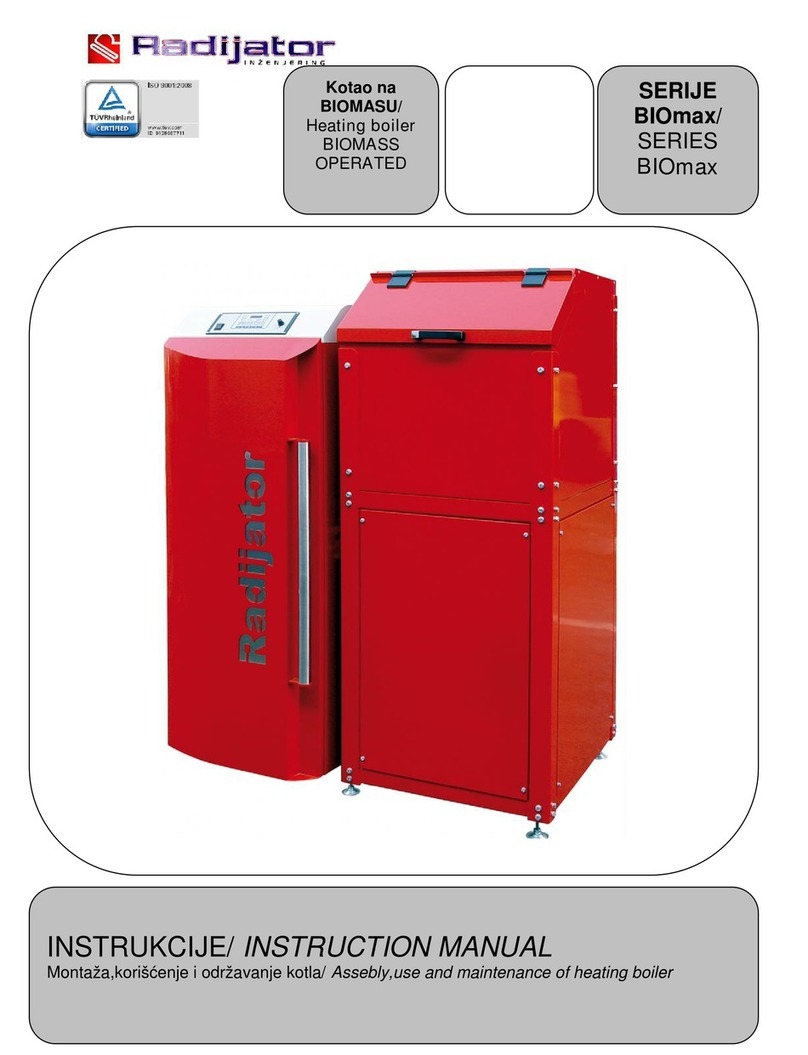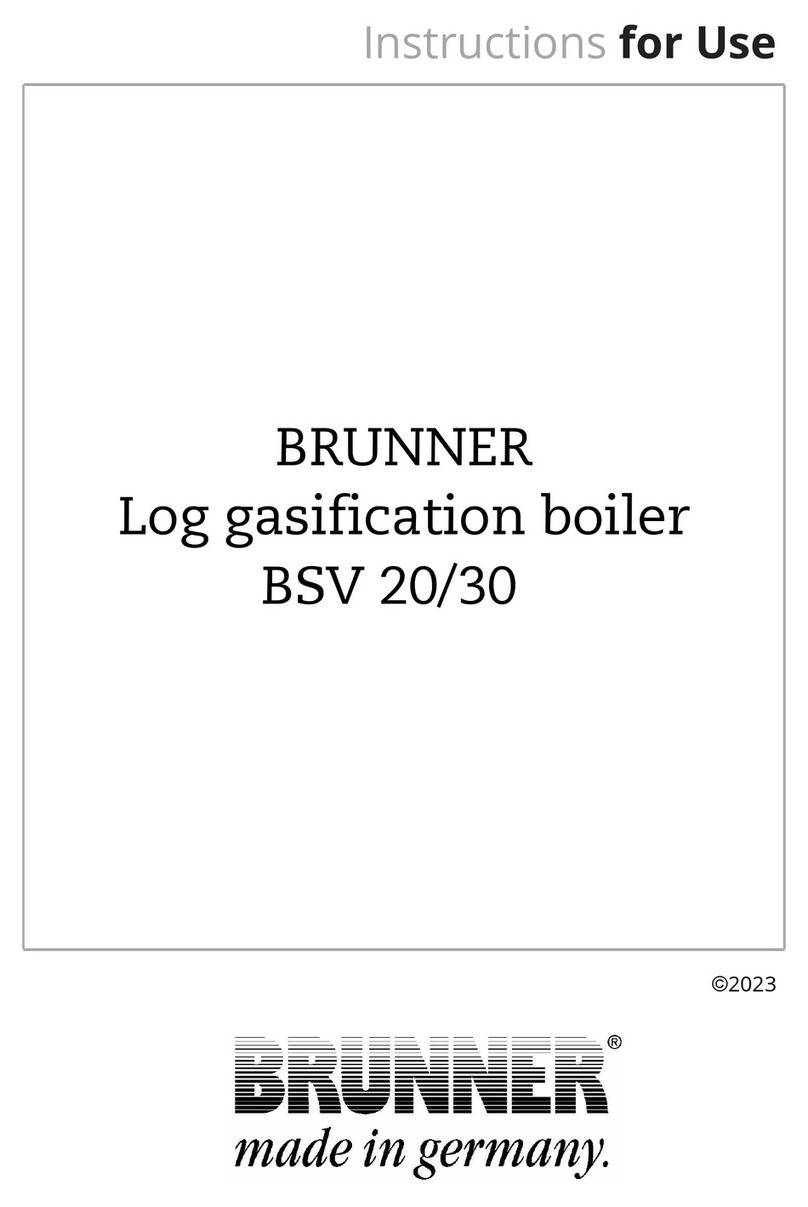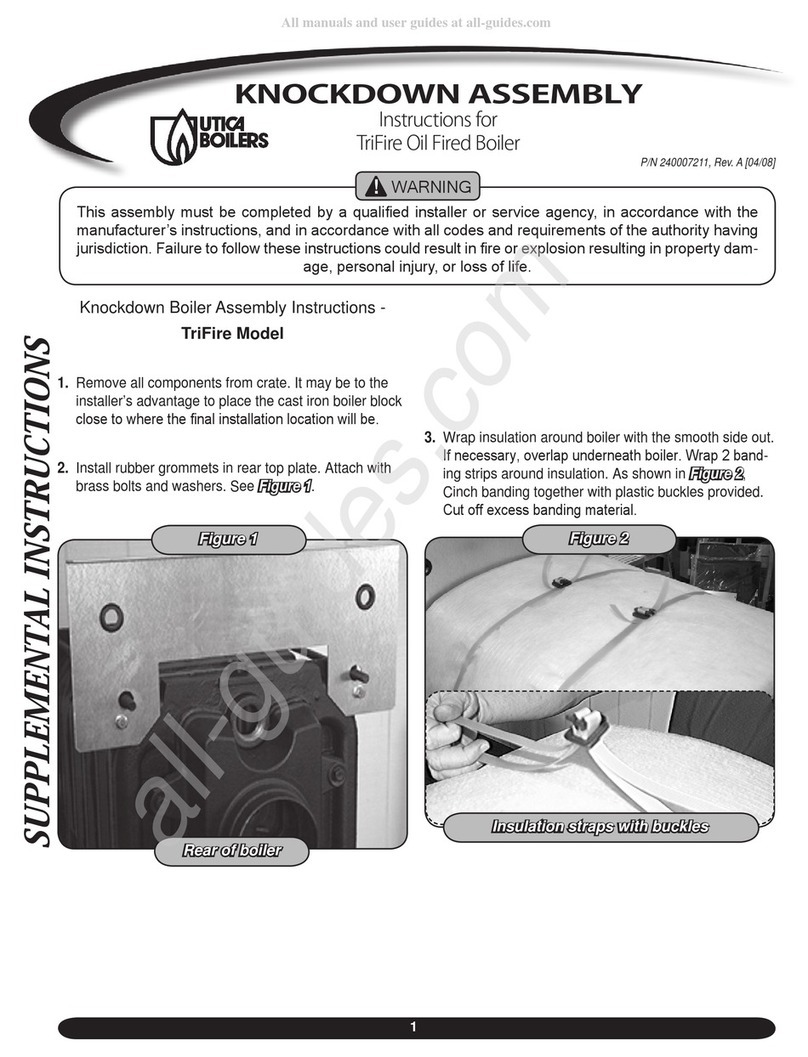
2.0 Ventilation & Combustion Air
The boiler should be provided with adequate fresh air for combustion when the boiler is installed, grilles should be placed
near the ceiling and the floor to provide ventilation as well as air combustion. One square inch minimum free area per
1000 B.T.U. per hour input or 135 square inches for each gallon per hour required in each grille. Outdoor connections
should be screened and provided with louvers. Refer to CSA Standard B365-19980. There should be at least 100 sq
inches of free air space to allow for proper combustion air when installing a WF200.
3.0 Maintenance
1. Lubricate Circular motor and Bearing Assembly two times yearly. Use medium wt. oil.
2. A clean, properly maintained hot water system should not be drained unless there is a possibility of
freezing, unless the boiler has accumulated a considerable amount of sludge or dirt on the water side, or
unless draining is necessary to permit repairs. Very little sludge should accumulate in a boiler where little
make-up water is added and where appropriate boiler water is maintained at proper strength.
3. Anti-freeze solutions, when used in a heating system, should be tested from year to year as recommended by
the manufacturer of the anti-freeze that is used. This practice is not approved under the rules of the ASME
Low pressure Heating Boiler Code. Check with local plumbing inspector for the proper “back flow prevent
or”.
4. Any water heater installed in, or connected to a boiler, should be back-washed periodically, using valves to
reverse the direction of the flow through the heater. The purpose of this back washing is to reduce the
amount of scale, which will accumulate at the outlet side of the heater. Continue the back washing until the
water runs clear. The back washing may be done frequently and the maximum interval should be
determined by trial.
5. When a sealer is used to eliminate system leaks and similar problems or if the sealer is used in conjunction
with other compounds, the system should be completely flushed and drained after the sealer has performed
their functions. A maximum interval of five days with the sealer in the system is recommended, sealers
have a detrimental effect on boilers, pumps and relief valves and should be flushed out as quickly as
possible. Note: using a sealer without flushing will void guarantee.
4.0 Venting
Chimney Connector
Usually a few feet of flue pipe (single wall) are unused to connect the boiler to the chimney and in such cases, this section
of the venting system is called for a chimney connector. A great number of fires associated with wood burning appliances
are due to unsafe connector installations. The following requirements are designed to prevent two hazards: 1) ignition of
the surroundings, principally by radiant heating, and 2) inadequate draft, which could result in serious smoke
concentrations in the house. The minimum thickness of steel used for the flue pipe must conform to Table below.
Min Thickness of Metal used in Steel Flue pipes
Diameter of Flue Pipe, In Minimum Thickness, In
7-8 0.021
Each flue joint should be secured with at least 3 metal screws or equivalent. Outside mechanical support should be used
if the connector is more that 6 feet long. The flue pipe should be accessible for inspection, cleaning and possible
replacement.
If the flue pipe connects to an existing chimney, the pipe should penetrate through the inner surface of the masonry wall,
but not beyond (not into the space itself.) The connection should be made physically secure such as through the use of
high temperature cement.
A flue pipe serving a solid fuel appliance should:
A. Be securely supported by metal or other non-combustible supports.
B. Be as short and straight as possible.
C. Not exceed a maximum 10-foot horizontal run.
D. Be designed and constructed to allow for expansion.
E. Be sloped upward toward the chimney at least ¼ inch per foot of horizontal run.
F. Have a cross-section area no less than: 1) The area of the flue outlet of the appliance served by a flue pipe
2) The combined area of the flue outlets of all the appliances served by a breeching.
G. Enter the side of a chimney through an approved metal thimble or masonry flue ring.
H. Not extend into the chimney flue.

